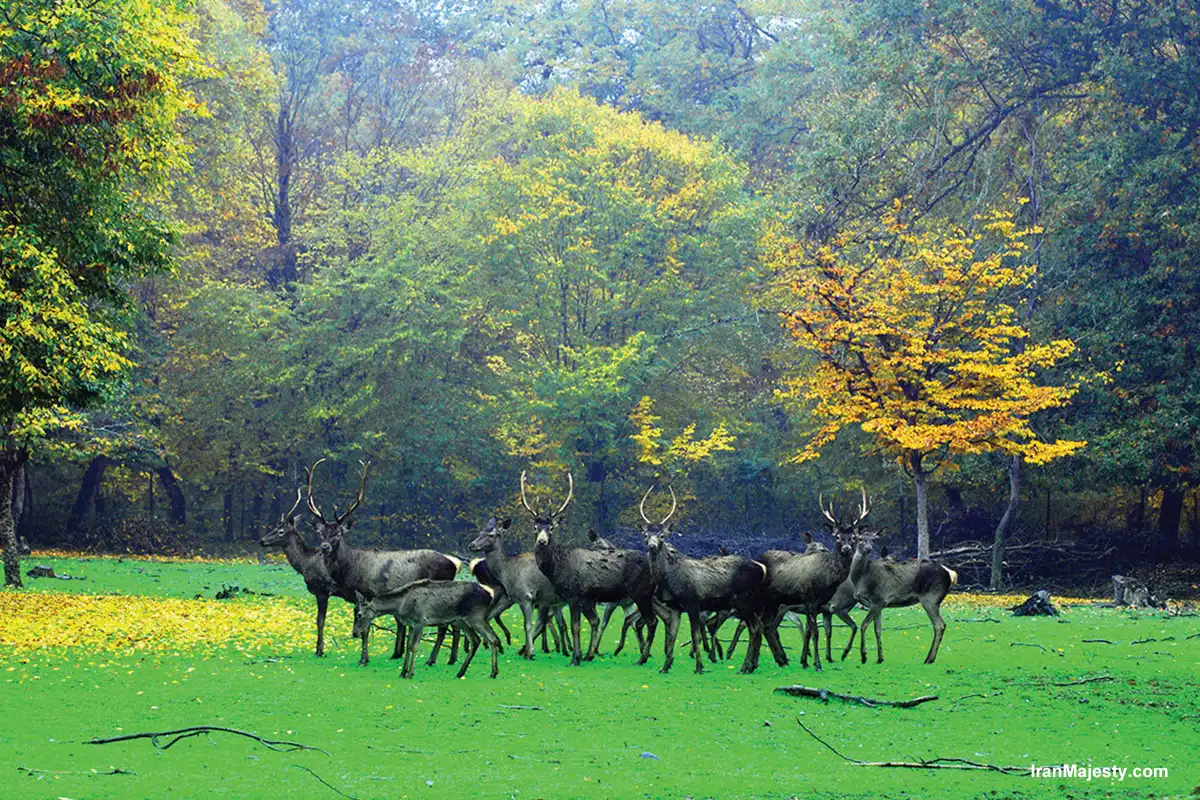Iran is home to an impressive variety of landscapes, each boasting its own unique beauty, rich biodiversity, and ecological significance. From lush forests and vast deserts to rugged mountains and tranquil wetlands, Iran’s national parks are a haven for nature enthusiasts and adventurers. These protected areas offer not only scenic beauty but also a window into the country’s efforts to preserve its natural heritage.
In this article, we’ll dive into some of Iran’s most renowned national parks, explore their unique features, and highlight why they should be on every traveler’s must-visit list.
Golestan National Park
Location: Northeastern Iran
Best Time to Visit: Spring and Fall
Golestan National Park, Iran’s oldest and largest national park, is a UNESCO Biosphere Reserve and one of the country’s most biodiverse areas. Spanning over 900 square kilometers, Golestan is home to a wide range of flora and fauna. The park hosts a variety of habitats, including dense forests, grasslands, and rocky mountains, supporting species like the Persian leopard, wild boar, and various bird species.
Why Visit?
Visitors to Golestan can enjoy scenic hikes, wildlife spotting, and bird-watching. It’s an ideal destination for anyone interested in experiencing Iran’s natural beauty and observing rare animals in their natural habitat.
Kavir National Park
Location: Northern Iran
Best Time to Visit: Late Fall to Early Spring
Also known as the “Little Africa of Iran,” Kavir National Park is a protected desert landscape that covers about 4,000 square kilometers. Its arid beauty includes salt flats, sandy dunes, and arid plains dotted with small oases. The park is known for its diverse wildlife, including the rare Asiatic cheetah, Persian gazelle, and wild sheep.
Why Visit?
Kavir National Park is perfect for those fascinated by desert ecosystems and looking for unique photo opportunities in the vast, quiet expanses of Iran’s wilderness. The experience of seeing desert-adapted animals and taking in endless views of the barren landscape is truly unforgettable.
Lar National Park
Location: Alborz Mountains, near Tehran
Best Time to Visit: Spring and Summer
Nestled in the Alborz Mountains near Mount Damavand, Lar National Park is famous for its alpine landscapes, vibrant wildflowers, and freshwater streams. In the spring, the meadows come alive with colorful flowers, creating a stunning contrast with the rugged mountain backdrop. The park also offers a chance to spot brown bears, wolves, and foxes.
Why Visit?
Lar is a great destination for hiking and picnicking in a serene mountain environment. The park’s proximity to Tehran makes it accessible for a day trip, providing a refreshing escape from city life.
Bakhtegan National Park
Location: Fars Province
Best Time to Visit: Late Winter to Early Spring
Once centered around Lake Bakhtegan, Iran’s second-largest lake, Bakhtegan National Park is a sanctuary for migratory birds, including flamingos and pelicans. Although the lake has been affected by drought, the surrounding landscapes still offer a beautiful and serene environment for bird-watchers and nature lovers.
Why Visit?
This park is a paradise for bird enthusiasts. The chance to observe large flocks of migratory birds, particularly in winter and early spring, is a sight to behold.
Qeshm Island Mangrove Forest (Hara National Park)
Location: Qeshm Island, Persian Gulf
Best Time to Visit: Winter and Spring
Hara National Park on Qeshm Island is home to Iran’s largest mangrove forest. Covering over 8,000 hectares, this unique ecosystem is a maze of waterways and salt-tolerant trees. The forest plays a critical role in preserving biodiversity, providing shelter for fish, birds, and other marine species.
Why Visit?
A visit to the Hara mangroves offers a unique experience of exploring the calm waterways by boat. It’s a peaceful and fascinating experience for anyone interested in unique coastal ecosystems and marine life.
Tandooreh National Park
Location: Khorasan Razavi Province
Best Time to Visit: Spring and Summer
Nestled in the mountains of northeastern Iran, Tandooreh National Park is known for its dramatic cliffs, deep valleys, and rich biodiversity. This park is particularly notable for its population of Persian leopards, one of the most endangered big cats in the world.
Why Visit?
Tandooreh offers rugged landscapes ideal for adventurous hikes and wildlife photography. The park’s remote location and relatively low visitor numbers make it a true hidden gem for nature lovers.
Arasbaran Protected Area
Location: East Azerbaijan Province
Best Time to Visit: Spring and Fall
Arasbaran is a UNESCO Biosphere Reserve and a dense, forested area near Iran’s border with Armenia and Azerbaijan. This region is rich in plant diversity, with forests of oak, hornbeam, and juniper. It is also home to rare species such as the Armenian mouflon, wild goat, and a variety of bird species.
Why Visit?
Arasbaran is a beautiful destination for hiking and enjoying forest landscapes. Its rich biodiversity and historical significance make it a fascinating place to explore.
“For a deeper perspective on Arasbaran Protected Area, here’s an excellent video from Tofangchi. It’s included here for added context and appreciation of the creator’s expertise.”

Neyshabur’s Turquoise Mines and Razavi Khorasan’s Natural Parks
Location: Razavi Khorasan Province
Best Time to Visit: All year
Neyshabur, known for its historic turquoise mines, is a lesser-known destination that combines cultural heritage with nature. The turquoise mines have been operating for thousands of years and are still active today. Surrounding natural parks in the province offer green landscapes, mountains, and clean rivers.
Why Visit?
Neyshabur offers a unique combination of cultural history and nature. The turquoise mines are a unique attraction, and the natural parks nearby offer a peaceful environment for relaxation and reflection.
Why Iran’s National Parks Should Be on Your Travel List
Iran’s national parks are as diverse as they are stunning, offering something for every type of traveler. Whether you’re a fan of deserts, mountains, forests, or coastal areas, there’s a park in Iran that will capture your imagination. These parks are a testament to Iran’s natural beauty and its commitment to preserving this beauty for future generations. Exploring these protected areas is not only a journey through stunning landscapes but also a glimpse into the country’s ecological efforts and rich biodiversity.
Planning your next adventure? Iran’s national parks await, offering peace, adventure, and natural beauty at every turn! Come explore these breathtaking landscapes and discover why Iran’s parks are among the world’s hidden treasures.
If you enjoyed this article, please leave a comment or share it with others who might be interested in exploring Iran’s natural wonders!


0 Comments